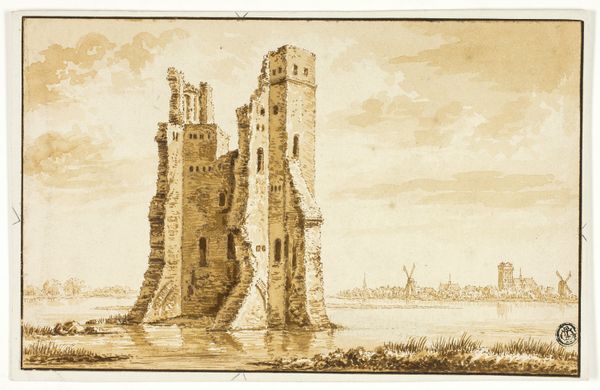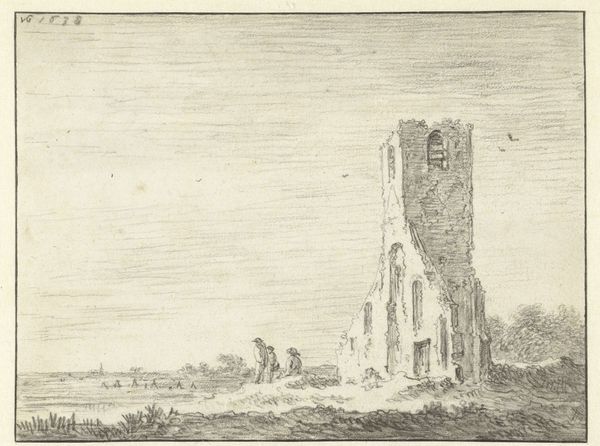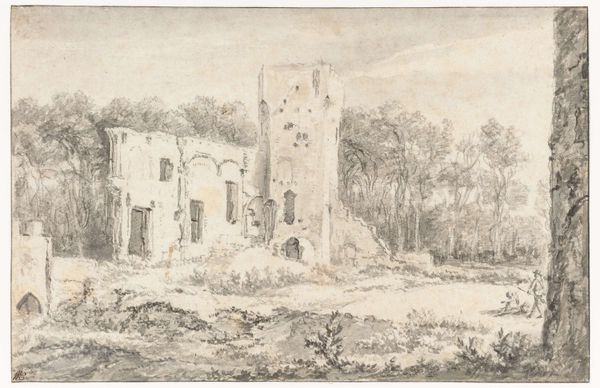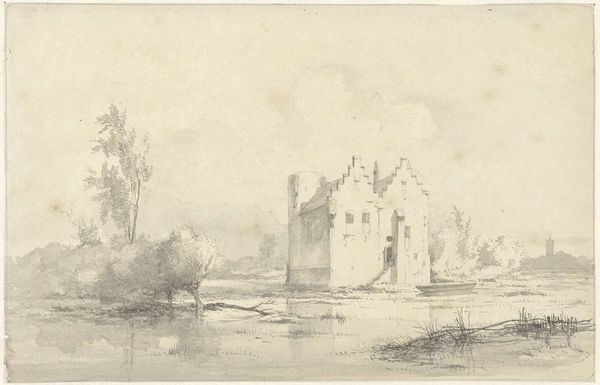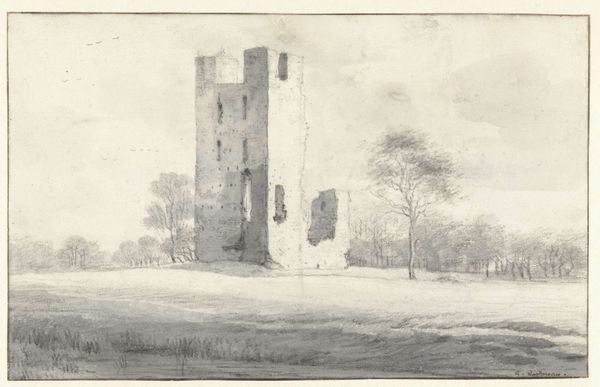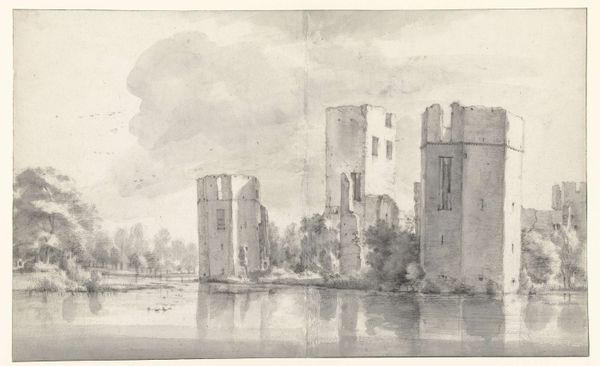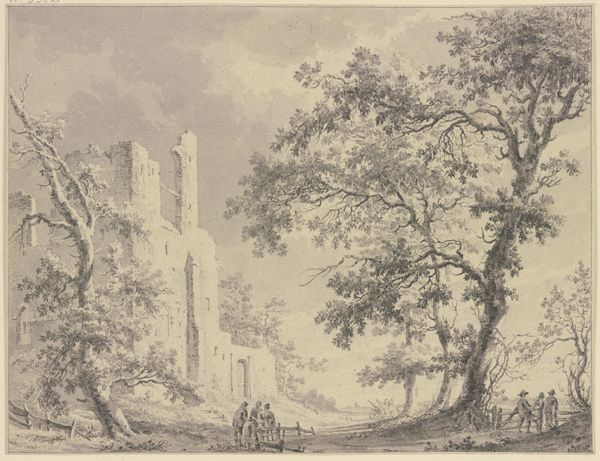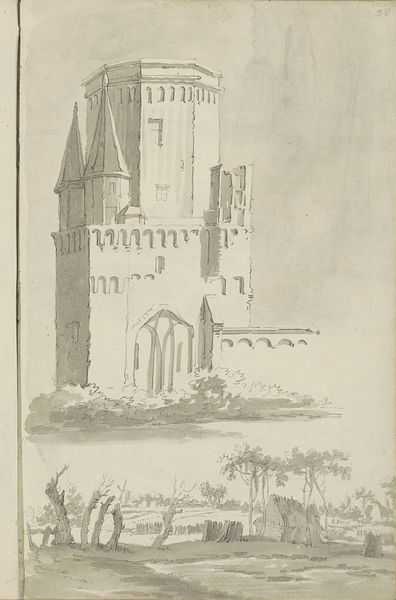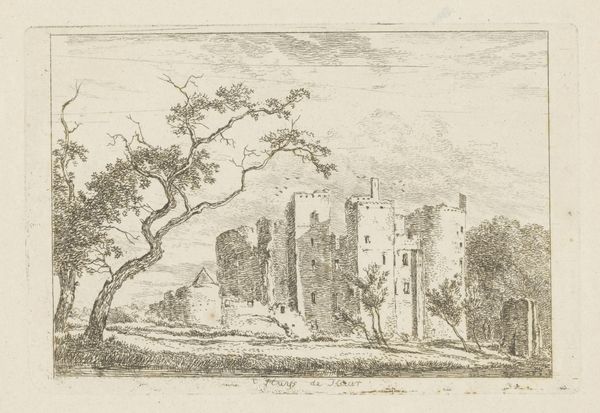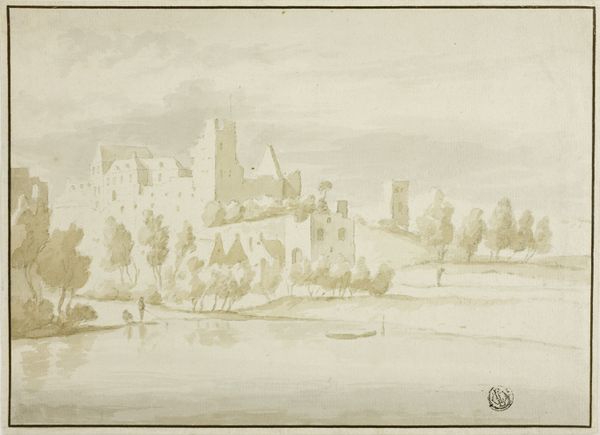
drawing, architecture
#
drawing
#
baroque
#
landscape
#
architecture
Copyright: Public Domain
Editor: This drawing, “Turmruine im Wasser stehend (Huis te Merwede, Dordrecht)” by Roelant Roghman, really captivates me with its stark depiction of a ruined tower amidst water. I am immediately struck by the contrasts of light and shadow across the stone. What can you tell me about the way Roghman uses these formal elements to create a lasting impression? Curator: Certainly. Focusing on formal elements, we can observe how Roghman employs line and tonality to establish depth and spatial relationships. Note the almost monochromatic palette; this deliberate choice pushes the viewer to engage with subtleties of form and texture. The precision of line, particularly in the rendering of the ruined architecture, creates a sense of both solidity and fragility, doesn't it? Editor: It does, the sharp lines around the ruins really make it stand out against the soft textures of the sky and water. Why is the sky so empty in comparison to the very detailed structure? Curator: Consider how that empty sky, far from being a void, functions structurally. It amplifies the verticality of the ruin, compelling our gaze upward and accentuating the play of light and shadow that articulates its decaying surface. What impact does this concentrated focus on verticality and decaying surface achieve, in your opinion? Editor: I suppose it makes the viewer feel the magnitude and long history of the tower and nature's impact on it more profoundly. I focused on symbolism, but analyzing the formal structure shows me how Roghman builds an artwork. Curator: Precisely. Shifting your analysis from symbolic interpretation to close reading, reveals just how much meaning can be created through attention to the formal characteristics of art.
Comments
No comments
Be the first to comment and join the conversation on the ultimate creative platform.

